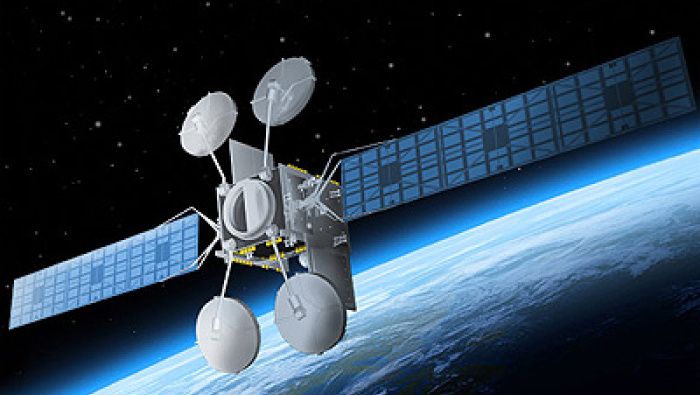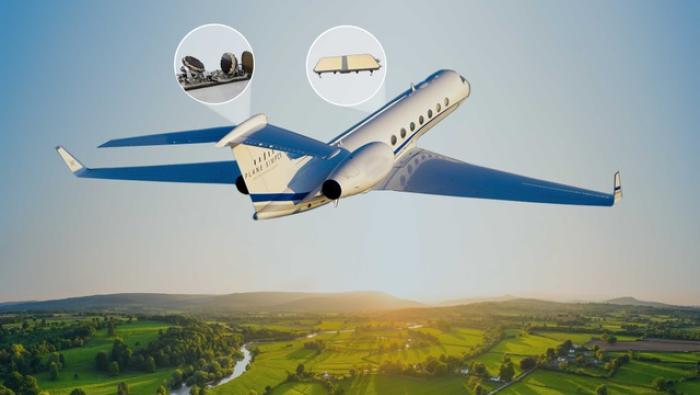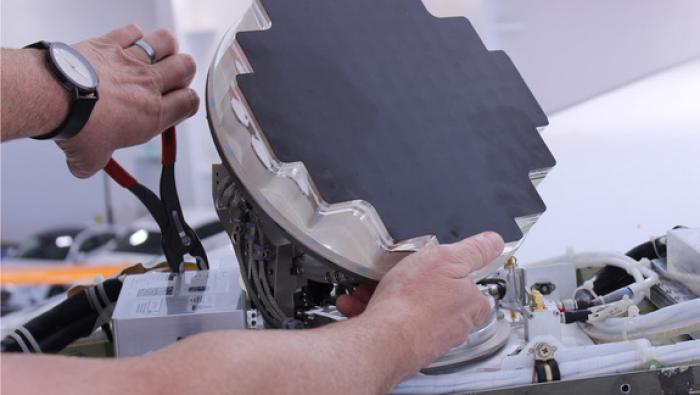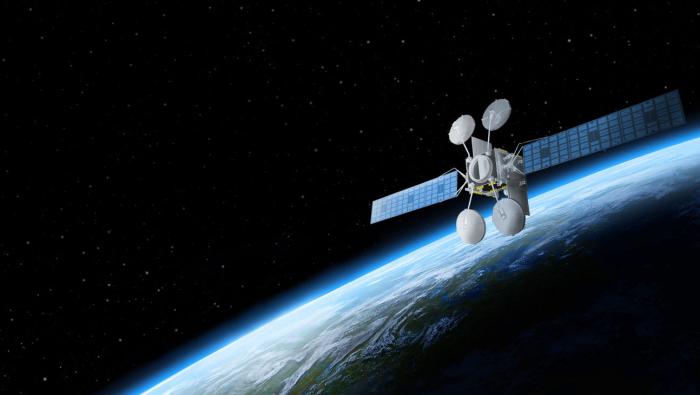“Forget airspeed, range, and rate of climb: the business jet performance metrics that matter most to executives now are the bandwidth, speed, and coverage area of [the aircraft’s] onboard connectivity equipment.”
—Chief Executive magazine
To stay ahead in today’s rapidly changing business world, executives require an airborne connectivity solution that extends their office’s online experience into the airplane. Viasat’s new-generation Ka-band network meets that need with unparalleled security, capacity, and capabilities at speeds of up to 60 Mbps.
If you look at the leading indicators of business aircraft use—in the U.S. in particular—you’ll see that there’s been an upswing to near 2019 usage levels over the past month or so. That’s very good. And, for several reasons, it’s not surprising.
“What we’ve been hearing from our customers and the market is that a lot of companies are going to rely even more on private aviation going forward,” stated James Person, director of business development, Viasat business aviation division. “One of our customers is a major U.S.-based corporation. And while it has not mandated that its leadership team members stay off airlines, as a health and security precaution it is encouraging them to restrict travel to the company’s business jets.
“It’s not only a much safer way to travel, it’s the only way they can conduct business in a secure setting,” Person added. “For example, the company’s four super-midsize jets all have a VPN (virtual private network) through the Viasat Ka-band connectivity solution, so communications are as fast and secure as they would be on the ground.”
And for this fast-paced corporate operator, extending the office’s capabilities into the airplane is a requirement.
“As an IS-BAO-Stage 3 international operator, we have six aircraft: two large-cabin Gulfstream G650s and four super-midsize Gulfstream G280s,” stated Tim A., director maintenance of a Fortune 500 company. “Each aircraft flies around 400 hours a year, and 90 percent of our trips have members of our senior leadership team on board. Our success is all about extending the speed, performance, security, and reliability of the office into the aircraft.”
Tim said that after spending a couple of years looking at all of the options for connectivity, he and the company’s IT team selected Viasat’s new-generation Ka-band offering for their upgrade to new Gulfstream G280s.
“We felt Viasat’s Ka-band was the best solution for our needs, and it is,” he said. It’s all about bringing the speed, performance, and reliability—the office experience—into the airplane. That’s what our passengers demand.”
How to make a G280 faster than a G650.
Tim said he knew that the Viasat Ka-band solution would meet his company’s connectivity needs. Still, he and the institution’s executives have been “surprised and delighted” by how well the system performs.
“Our first trip out of the delivery center was a long international flight with the head of our senior leadership team on board,” he explained. “The Viasat system worked flawlessly. We saw between 10 and 15 megabits per second wherever we went. We were very happy, but we had no idea what was coming.”
Over the past couple of years, with seemingly every successive G280 that the operator has placed into service, Viasat has increased its Ka-band network’s speed.
“We’ve seen up to 60 Mbps into the airplanes. Yes, there aren’t a lot of aircraft on the network right now, but even if we see 35 to 40 Mbps to the cabin, that’s still fantastic speed,” Tim said. “It was an eye-opening experience for the engineers at Gulfstream, too. The speeds we have on the Viasat Ka-band are quite a bit faster than what we have in the G650s.”
“Unfortunately, Viasat didn’t have a Ka-band solution for the G650s when we took delivery,” he says. “But there’s always the upgrade path.” (Since that time, Viasat has introduced a Ka-band solution for large cabin business jets – Ed.)
DoD-level security.
While the Ka-band network’s proven speed, reliability, and capacity would deliver the seamless connectivity the leadership team required, Tim stressed the benefit of yet another feature of the Viasat solution: segment-leading security.
“The network offers a mobile extension of our operations, so security is extremely important to us,” he said. “Our connectivity provider has to ensure solid security and Viasat has proven that its network is the best.”
“As a leading provider of SATCOM-based connectivity solutions for U.S. government aircraft, Viasat provides networks that are as secure as they come,” Person explained. “We secure the satellite segment, and we provide our own ground segment as well, to keep the data off the public internet as much as we can. And because our business aircraft customers use that same network, they get to take advantage of our unmatched level of security.”
Big capacity from smaller hardware.
Tim also says that while the Viasat Ka-band system’s speed, security, and “office extending” capabilities all met the operator’s needs, as the DOM responsible for getting it all installed on his company’s new G280s, he had another set of requirements.
“We had the Viasat Ku-band system in our Gulfstream 550s, so I knew the equipment was rugged. We never had an issue with its durability,” he explained. “But with the new G280s being smaller, having the equipment fit in the external equipment rack was a requirement. Nothing goes inside the cabin or baggage areas.”
“Our airplanes typically go on week-long trips, so every inch of the baggage areas is critical to us,” Allen continued. “The final installation is perfect. Everything fits in the racks outside the cabin.”
More bang for their buck.
While all business jet owner/operators want maximum value from their airborne investment, that goes double when an owner/operator is as cost-conscious as it is forward-thinking.
“The Viasat solution’s speed and performance are exceptional,” Tim said, “and another advantage they offer is flat-rate pricing. It gives us more bang for our buck. We don’t have to spend another 10 or 20 grand to pick up a couple of megabytes per second of speed. You pay one flat fee and there’s no cap on the speeds you receive.”
Noted Person: “We don’t ask customers to pay more to get our fastest connectivity. Two- hundred-hour-a-year operators don’t need a lot of data, but they still want the fastest and best onboard experience,” Person stated. “They can buy a smaller bucket of Ka gigabytes and still get the fastest Ka-band speeds. Ka-band performance is Ka-band performance no matter how much data you need.
“Operators like it because pricing is about how much you use,” he added. “It’s much easier for them to budget their packages. No matter if their needs change and they increase or decrease the total size of their package, their passengers’ online experiences will not change.”
Speaking of changing needs, Tim stated that another Viasat advantage that his company really liked was that the hardware it installed on its aircraft today is forward compatible with Viasat’s future network upgrades.
“That is huge for us,” he said. “We plan to keep these airplanes for a long time. Viasat knows where it is going in the future, and its equipment is designed to grow with those performance advancements. That was a big selling point. There is no end to where this equipment can take us. Viasat will meet our needs well into the future.”








